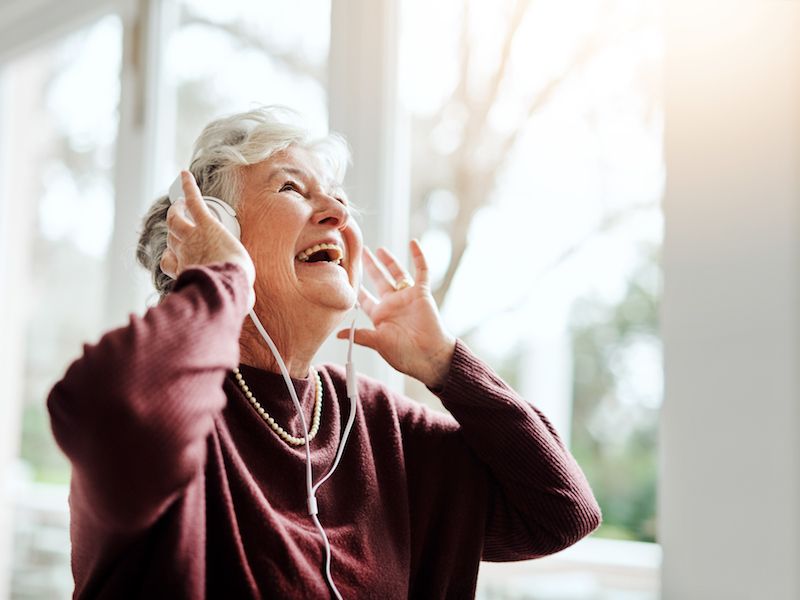
Noise-related loss of hearing doesn’t just affect individuals who work in loud environments, such as construction workers or heavy metal roadies. It doesn’t even have to be work-related, recreation-related noise exposure can be dangerous, too. The most common type? Loud sounds heard through headphones, whether it’s music, gaming, streaming video, or even an audiobook with the volume turned up.
You might be alarmed to learn that a mobile device can go that loud. But these devices can achieve sustained volumes of over 105 dB, which is close to the normal human threshold for pain. Your ears will actually start to hurt at this volume. So what’s the solution for safeguarding your hearing against volume related injury.
It’s significant here to think about the volume. A simple shorthand that’s widely suggested is the 60/60 rule: Listen with the volume at or below 60% for no more than 60 minutes in a single session (because the length of sound exposure matters, too).
Create a Setting on Your Hearing Aids For Listening to Music
If you use hearing aids, you’re most likely streaming your mobile device right to your hearing aids, so make certain the volume is not too high or that you’re not trying to drown out other sounds with your music. And there are better ways to listen to music so consult us about that also. Hearing aids aren’t made to increase the quality of music like they do with voices so if really like music, you might have noticed this. We might be able to make adjustments to minimize feedback and noise while maximizing some frequency ranges to enhance the quality of sound while listening to music.
What Are The Best Headphones For You?
If you don’t use hearing aids, there are lots of choices for shopping for headphones. It may be a matter of personal preference, but there are some things you should consider there too.
Headphones That go Over The Ears
Over the ear headphones are becoming popular again but you most likely won’t find the old foam covered speakers that used to come with a walkman. Often unexpectedly costly, they offer a large variety of color options and celebrity endorsements, and of course, exceptional sound quality. And unlike those little foam pads, these cover the entire ear, limiting outside noises.
Main-stream perception is that these are less dangerous than in-ear headphones because the source of the sound is further from your eardrum. But because the speakers are bigger they are commonly capable of much higher sound level. In addition, noise-canceling may help you ignore the crying baby on your flight, but in other circumstances, it can silence sounds you should hear (like a honking car). But on the positive side, you won’t need to compete with outside sound so you can listen to your music at lower levels.
Earbuds
The normal earbuds that are included with devices like iPhones are much maligned for their poor quality of sound, but because they come with your phone a lot of people still use them. Moreover, with newer models that no longer have a headphone jack, staying with Apple’s earbuds can simply be easier.
The drawback, aside from the inferior sound quality, is that basic earbuds can’t block outside noises, so that it’s more likely that you will pump up the sound level. It’s generally assumed that inserting earbuds so close to your eardrum is the primary problem but it’s really the volume.
Noise Canceling Earbuds
Lots of people opt for earbuds with a rounded, rubbery tip both because they’re more comfy than standard earbuds and more effective at blocking outside sounds. The rubber molds to the shape of your ear, creating a seal that blocks other noises from getting in. Not to sound like a broken record, but these have the same drawbacks as the other two (it’s all about the volume), as well as carrying the same caution as over-the-ear headphones (they can block out warning sounds). And if you use hearing aids, obviously these won’t work for you.
You might have to test out quite a few pairs before you find headphones that meet your needs. Depending on what you regularly use them for talking on the phone, say, versus listening to music, you’ll have different acoustic expectations. Listening to your tunes at a safe volume and coming across headphones that help you do that is the key.
How to be Sure Your Hearing is Safeguarded
How can you be certain it’s okay? If you have a smartphone, you can get an app for that, you can get the National Institute for Occupational Safety and Health’s free Sound Level Meter app. You can get other apps, but studies has found that the dependability of these other apps is spotty (also, for unknown reasons, Android-based apps have been shown less reliable). That motivated NIOSH to develop an app of their own. The app lets you measure external sounds, but it’s also possible to measure the sound coming from your device’s speakers, in other words, the true volume of what’s being sent to your ears. It’s a little bit of work, but taking these types of protective measures can help protect your ears.
